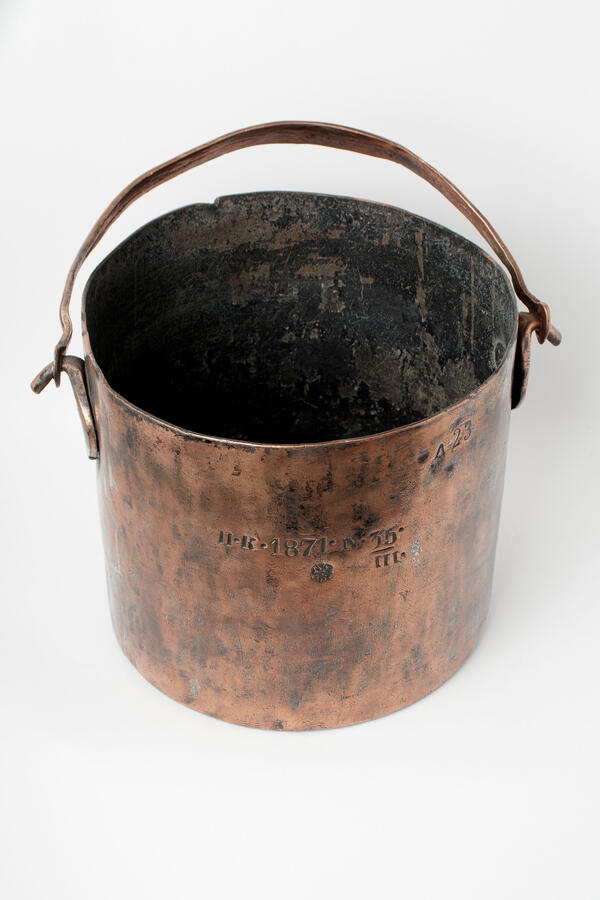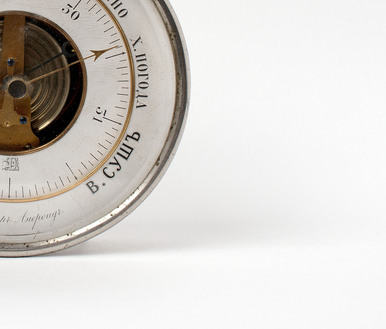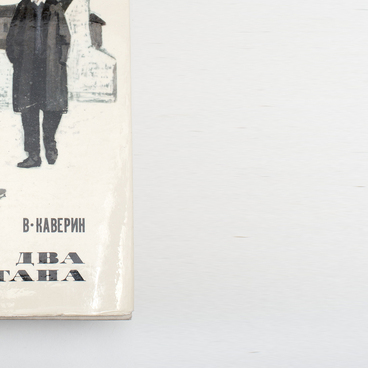The stamp “p.k. 1871. No. 35/III” has been preserved on the copper bucket. It is made of copper and has a curved arc-shaped handle. Such buckets are also called “marine” buckets and are used on ships.
Similar buckets of smaller size were included in the equipment of the tsarist army in the second half of the 19th century. They were also made of bronze, iron and aluminum. The volume of the soldier’s bucket-pot was about 2.5 liters. At first, it was issued only to the military of the active army, located outside of Russian territory. During the First World War, kettles were used extensively for storing and transporting liquid and dry goods, as well as cooking food over an open fire.
Cauldrons and buckets were one of the first household items created by people. Buckets for carrying water are mentioned in the Bible, and the oldest cauldron found by archaeologists is attributed to the late Bronze Age. Cauldrons were also assigned mystical properties: in the mythology of different peoples they were used for witchcraft and rituals.
Cauldrons range from small two-liter ones to very large ones up to 70 liters. The bucket was one of the pre-metric units for measuring volume and was equal to one fortieth of a barrel, or approximately 12 liters. This was the most common volume of a standard household bucket.
The conical shape of the bucket with a wider top is most optimal for use and storage. It allows one to stack empty buckets into each other, which significantly saves up space. For making it easier to pour liquids, buckets may feature a fold-spout at the top, which is especially typical of buckets used for manual milking.
People have been using copper for making various products for about 7000 years. One of its main features as a material for cookware is its high thermal conductivity — ten times greater than that of steel or aluminum. Because of this, heat is evenly distributed throughout the entire surface of the cauldron, and the food is cooked faster.
Copper cookware has another important advantage, as it is considered to make products stored in it more hygienic: copper has an antibacterial effect and protects from salmonella and E. coli.





